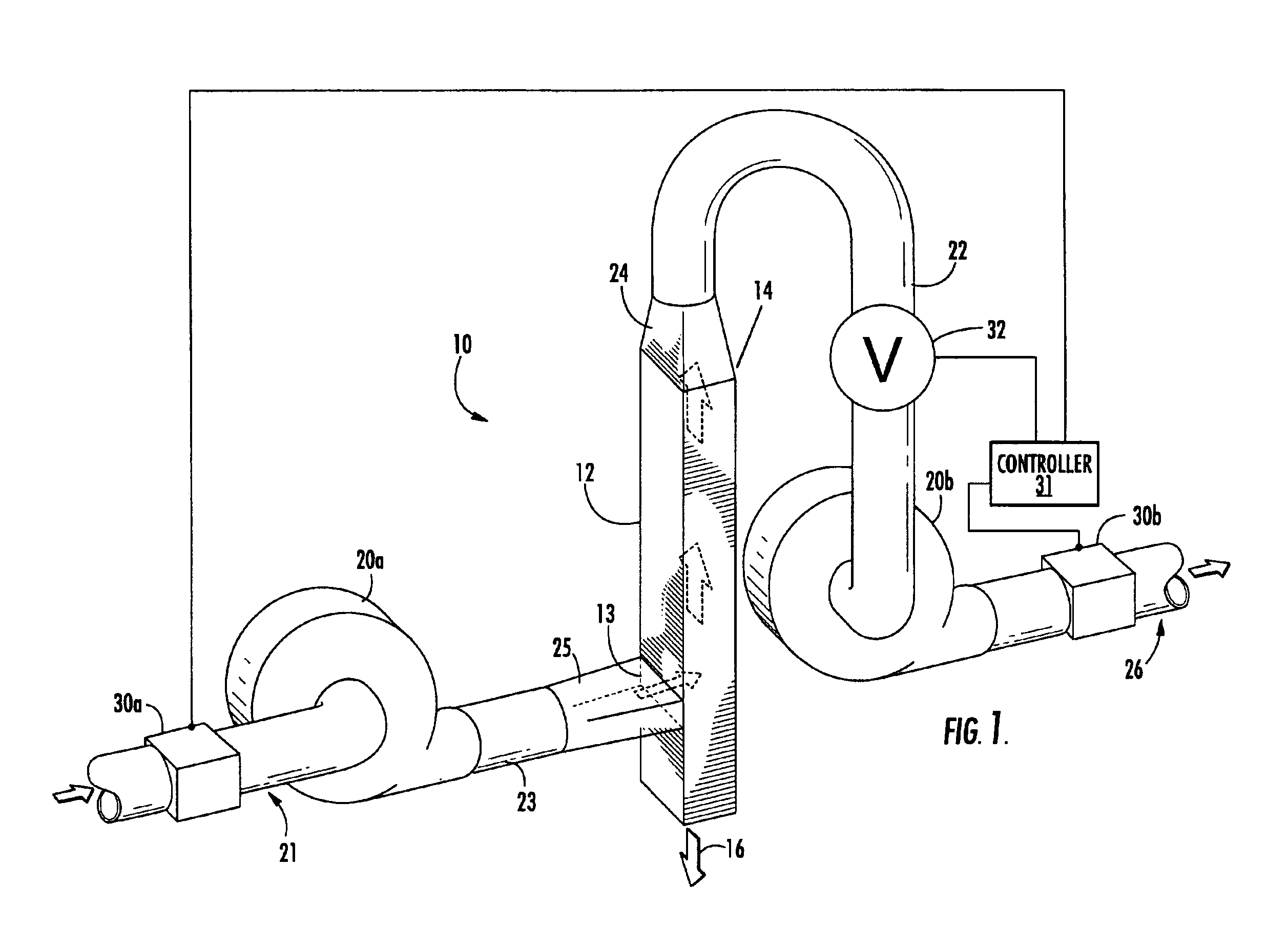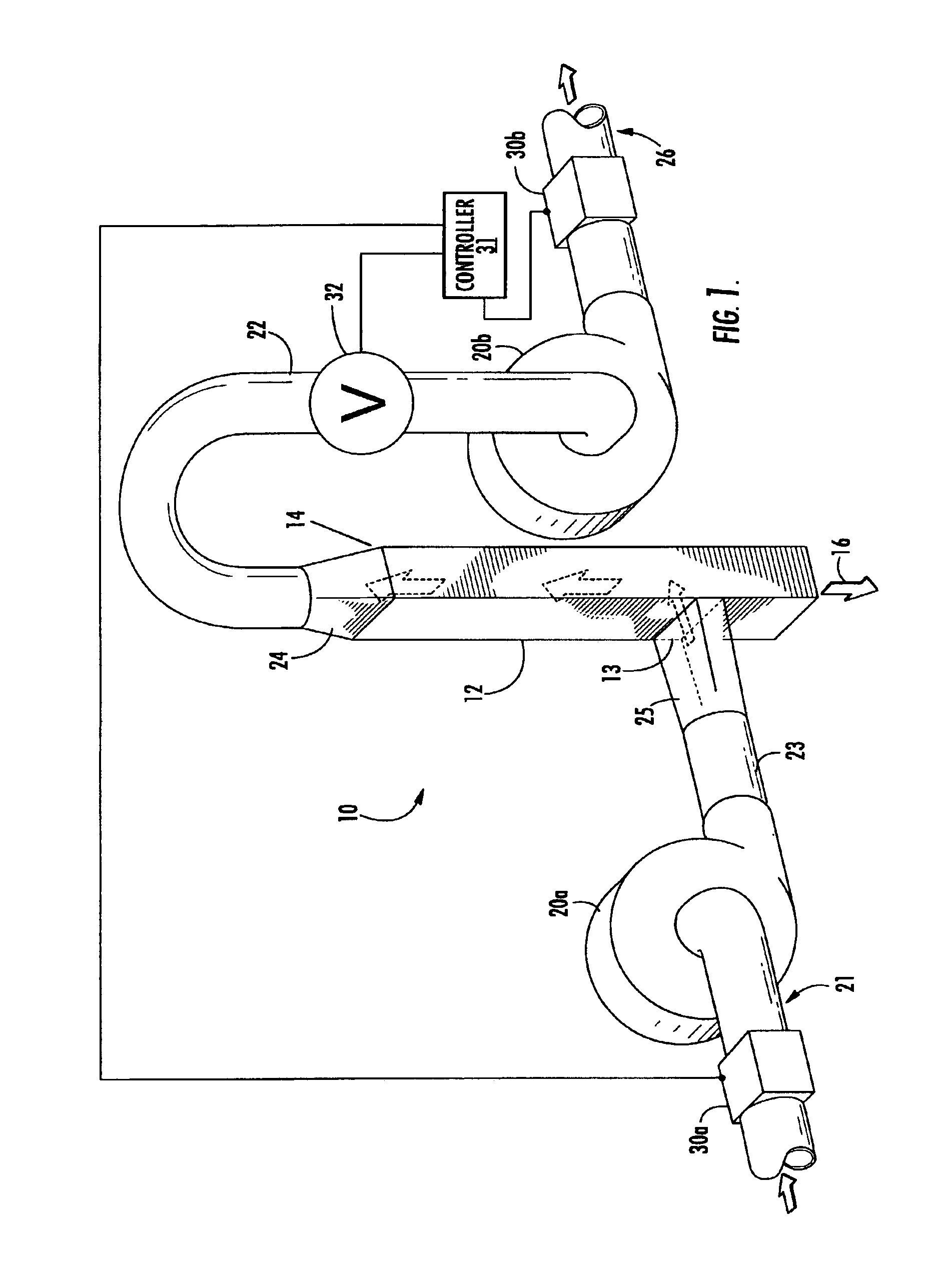Automatic debris separation system
a technology of automatic separation and debris, applied in the direction of solid separation, gas current separation, agriculture tools and machines, etc., can solve the problems of preventing the recovery of useful components, requiring constant challenge from textile manufacturers and suppliers, and merely discarding textile wastes
- Summary
- Abstract
- Description
- Claims
- Application Information
AI Technical Summary
Benefits of technology
Problems solved by technology
Method used
Image
Examples
Embodiment Construction
[0017]The present invention is an automatic debris separation system and process for effecting density separation of fragmented materials. This automatic debris separation system is especially well-suited for removing metal debris from intermediate polymer feedstocks, such as those resulting from the reclamation of carpet, yarns, and other textile wastes. Such feedstocks typically include metal debris that must be removed to preclude process upsets during polymer reclamation operations.
[0018]The automatic debris separation system efficiently removes metal contaminants (e.g., wire, staples, rivets, tacks, or baling wire and bands) from reusable polymer fibers (e.g., polyester and nylon). Among other uses, the recovered polymer fibers may be melt-extruded and pelletized, or formed into filaments, such as via melt-spinning. Pelletized polyester and nylon are especially useful for engineering plastics or resins. In this regard, metal debris is an unacceptable defect in most engineering ...
PUM
 Login to View More
Login to View More Abstract
Description
Claims
Application Information
 Login to View More
Login to View More - R&D
- Intellectual Property
- Life Sciences
- Materials
- Tech Scout
- Unparalleled Data Quality
- Higher Quality Content
- 60% Fewer Hallucinations
Browse by: Latest US Patents, China's latest patents, Technical Efficacy Thesaurus, Application Domain, Technology Topic, Popular Technical Reports.
© 2025 PatSnap. All rights reserved.Legal|Privacy policy|Modern Slavery Act Transparency Statement|Sitemap|About US| Contact US: help@patsnap.com


